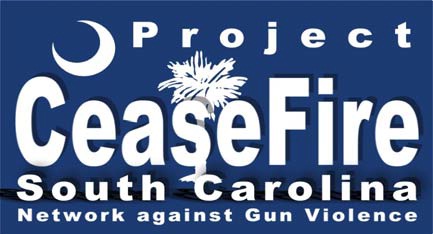Criminal Justice Leaders

Ideas For Action to Reduce Gun Violence
Those in the criminal justice field are the ones most often tasked with the responsibility of reducing crime and violence. When well connected--sharing information, making coordinated decisions, and collaborating with the larger community--criminal justice agencies can accomplish great reductions in gun crime and violence. Additionally, by setting the tone, criminal justice leaders can work with the community to set high standards of non-tolerance of gun crime and violence coupled with support of prevention and intervention initiatives. Criminal justice leaders see firsthand the effects of crime and can be effective speakers on the subject.
Establish an integrated process for dealing with gun crime and violence.
- Make it clear that your emphasis is on enforcing existing laws on gun crime and violence.
- Offer communication and instruction regarding the current laws on gun crime, and help enforce these laws.
- Make sure that everyone in your agency--top down and bottom up--knows and understands the federal and state gun laws, or knows where to get accurate information on them quickly.
- Increase channels of communication and information sharing within your agency and among agencies.
- Take an active role in the Project Safe Neighborhoods task force -- the collaborative group of law enforcement agencies-- with the U.S. Attorney's office in your area.
- Develop an integrated plan of how best to deal with crime, guns, and gun violence, and include all criminal justice agencies owning responsibility.
- Encourage all street officers and agents to ask questions of arrestees whenever a gun is involved in a crime (see AFT Gun Questions card) and document the answers in their reports.
- Provide a Federal Firearms Regulations Quick Reference Card to all street officers and agents.
- Take full advantage of gun tracing technology both to identify problematic sources of firearms and to identify gun-trafficking related issues in your community.
- Establish a process of regular and consistent debriefing of gun-crime defendants.
- Work with a variety of agencies to collect, analyze, and use data to get a full portrait of the extent and nature of gun violence in the community.
Engage the community in the reduction of gun crime and violence
- Assist the community in securing resources and funding opportunities for prevention and intervention initiatives; provide information on available grants and other opportunities.
- Increase opportunities for the community, and young people in the community, to be active partners in helping to reduce violent crime.
- Encourage community policing initiatives and community prosecution programs.
- Create incentives for young people to become engaged in positive activities. Publicly recognize young people who succeed.
- Work with the community to establish ex-offender programs for those offenders returning home, so they do not return to crime.
www.ProjectSafeNeighborhoods.gov
1-888-CRIME-SC


 U.S. Department
of Justice
U.S. Department
of Justice